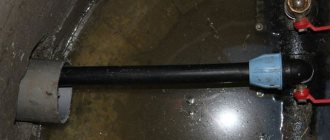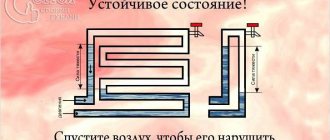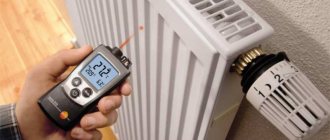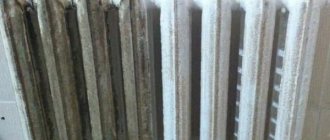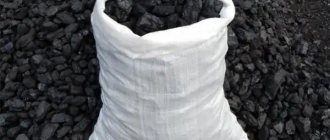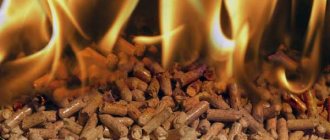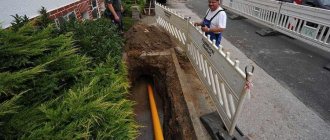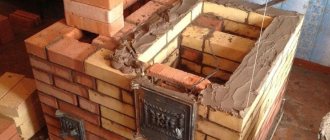27.08.2020
During operation, water supply systems, due to poor quality water and the lack of special water treatment, suffer from the formation of loose rust, silting of pipes, and deposits of mechanical particles. Therefore, it is periodically necessary to clean the pipes from loose rust - washing and sanitizing. There are several methods, but only a specialist can tell you which one is optimal for a particular situation. It is clear that cleaning is up to 10 times cheaper than completely replacing pipes, and the effect is comparable to replacement, since it is carried out right down to the metal, so timely professional cleaning of pipes from rust and other deposits will avoid serious accidents and problems during operation.
BWT solutions for cleaning heat exchangers:
Washing units
Reagents
To get a consultation
Reasons for the formation of loose rust in pipes
The opinion that the presence of rust is associated with corrosion of steel pipes carrying water is erroneous. The formation of loose rust is related to the composition of the water, and not to the pipes. Iron is a very common element in nature, which, when exposed to oxidizing agents, forms loose rust. Sanitary standards allow the presence of iron in drinking water at 0.3 mg/l, but often this norm is exceeded several times, so cleaning pipes from loose rust is directly related to the process of deferrization of water at the water treatment stage, converting soluble divalent iron into a trivalent insoluble form.
To do this, it is necessary to carry out aeration and filtration. One of the modern methods of water purification is biological. Iron bacteria oxidize iron to the trivalent form and in themselves they are not dangerous to humans, but some of their metabolic products are toxic. However, under conditions of low water flow, in a fairly short period of time, iron bacteria form bumpy fouling up to 10 mm high on the inner surface of the pipes, and with longer use, fistulas can even form. To prevent the formation of loose rust on the walls of pipes, it is effective to use special magnetic filters and water deferrization units.
Methods for cleaning rusty pipes
Corrosion can occur on both the outside and inside of the pipe. Cleaning methods depend on the location of the plaque and the degree of damage.
You should not remove rust from heavily rusted pipes - this can lead to damage, and as a result, the pipe will become unusable . Therefore, in case of severe corrosion, it is much more advisable to simply replace the damaged section of the pipeline or the entire line.
Only if the pipe is slightly damaged by rust, cleaning will be effective and will increase the life of the pipe for some time.
Cleaning the pipe outside
If the pipe is rusty on the outside, you can use the following to clean it:
- Mechanical means - sandpaper or a brush with metal bristles, you can use a cable brush with bristles arranged in a spiral, put on an angle grinder.
- Chemicals are special compounds that, as a result of a chemical reaction, convert rust into compounds that are safe for the metal surface. Rust removers contain various acids or alkalis. You can buy a ready-made product, or use proven folk methods, for example, citric acid and vinegar, mixed in equal proportions. The product is applied for 2-3 hours, after which it is washed off with soapy water. Another home remedy is a soda solution (two tablespoons per third glass of water) applied for 20 minutes, rinse off the alkaline paste with a weak vinegar solution. Chemicals are often used after mechanical cleaning. After cleaning the outer surface of the pipe, it is better to apply a primer containing corrosive deposit converters.
Note! Special rust removers should be used strictly following the instructions and dosage. They contain strong alkalis, which, if the instructions are not followed, can damage the pipes.
Cleaning the pipe from the inside
In addition to corrosion, scale and various deposits accumulate on the inner walls of pipes. To maintain the capacity of the pipe, it is necessary to regularly clean and flush it from the inside for preventive purposes.
We recommend that you read: Using an American connection in plumbing
To do this, there are several effective methods that allow you to get rid of unwanted deposits on the inner surface:
- chemical methods;
- hydrodynamic cleaning;
- mechanical methods.
Mechanical cleaning is considered the most popular, and it can be carried out either using simple devices in the form of a cable or a plunger, or using special equipment.
Special cables whose diameter is smaller than the diameter of the pipe. The device is a spiral, hollow inside and is considered a household tool. The cable is passed into the pipe and clears blockages, acting like a mechanical brush. The kit often includes additional attachments.
These devices work on the principle of a drill; a special nozzle is installed, which, rotating, removes dirt and pushes it into the
Chemical methods
There are many chemical compounds on sale for cleaning pipes from rust and plaque. Such products cope well with minor damage and can be used independently without the involvement of specialists.
If used correctly, you can extend the life of pipes by using products not only when rust has already begun to corrode the metal surface, but also for prevention.
Cleaning pipes with chemicals helps restore their capacity. These products contain glycolic or glyoxal, as well as other chemical compounds that are safe for human health.
Hydrodynamics
This method does not require dismantling the line, but the procedure can be carried out by specialists with sufficient knowledge, qualifications and experience. Cleaning occurs by supplying a high-pressure water jet into the pipe using special equipment.
Water cleanses the inner surface of rust and other deposits of various types. Often cleaning is carried out together with mechanical treatment, thus cleaning and washing the inner walls of the pipe.
The latest technical method for cleaning pipes is carried out using pneumatic-hydropulse equipment. The device creates a pulse wave inside the pipe due to the formation of cavitation bubbles, which cause air turbulence and water bubbling, removing deposits from the walls.
We recommend that you familiarize yourself with: Main manufacturing plants of profile pipes in the Russian Federation
Electric pulse method of pipe cleaning
In this case, the energy of the electric discharge in water is converted into a shock wave and hydrodynamic flows, which destroy not only loose rust deposits, but also the hardest ones. Destroyed deposits are washed away by the liquid flow without damaging the pipe walls. Such work can be carried out at any time of the year without draining the water from the system. This technology makes it possible to clean pipes from loose rust without disassembling the pipes of heat exchangers and radiators being cleaned.
In a situation where the pipes to be cleaned are in a disrepair and are held together only by rust, it is still better to find out this in advance at the time of cleaning and replace them in a timely manner. Specialists will promptly shut off the flow of water to the damaged area and replace the emergency pipe, while the damage will be minimal compared to if the same thing happens in the absence of specialists and equipment. That is, cleaning pipes from loose rust is necessary and professionals will carry it out in the most thorough manner with full responsibility for the work done.
Getting rid of corrosion on the outside
Pipeline cleaning is carried out more often if corrosion has already spread. However, it should be remembered that active chemical or mechanical action can cause even more intense corrosion. If the rusty spots are on the outside of the pipes, then getting rid of the problem is much easier.
There are several methods for removing rust from the outside:
- Using abrasive material, a spatula or sandpaper, you can remove a thin layer of plaque. After cleaning, wash the pipeline with hot soapy water.
- With vinegar or citric acid. After mechanical cleaning, a mixture of citric acid and vinegar in equal proportions is applied to the damaged sections of the pipeline. After 2-3 hours, the solution is washed off with soapy water.
- Using soda. Its solution (2 tablespoons per glass of hot water) is applied to the area damaged by corrosion. After 20 minutes, wash off with water and vinegar.
- Use of special means. They are sold in stores and help stop corrosion. After finishing the work, a primer is applied, which contains rust converters.
How to remove condensation and rust from pipes with your own hands
It is difficult to find an apartment in which condensation does not form on the cold water pipes. The reason for this is either the high vapor content in the air or temperature changes. Why is condensation on pipes harmful?
If you don’t fight this “little thing,” you will have to fight mold, and it is known to be almost invincible due to its ability to adapt to any environment. In addition, Japanese scientists have long proven that the main mystery of our planet, as mold is called, is similar to both animals and plants, possessing the rudiments of intelligence! So is it really worth letting this enemy, who is not afraid of radiation, into the house?
How to find the cause of mold? Open the bathroom doors at night and check that the pipes are dry before morning. If you do not find moisture, then the problem lies in poor ventilation of the room. Clear the blockages and the issue will resolve itself.
Another common reason is a leak from a faulty tank. Water that does not have time to warm up in the pipe is replaced with cold water. As the pipes cool even more, they become covered with condensation. Technicians should check and repair the faucets and inlet valve.
However, the riser pipe can also “sweat”, but this means that it is not your problem, but your neighbors’: their pipes are leaking.
How to remove condensation from pipes in the bathroom?
Many craftsmen advise wrapping a bandage around the pipe, lowering its end into any container to pour out water, but this method is temporary and ineffective. It is better to buy thermal insulation and wrap the pipes with it (ask the seller for soft insulation). Even a woman or a teenager can cope with this work, so the owner who does not tidy up the pipes in the bathroom will be ashamed. Remember that the sponge is installed only on dried pipes.
Another easy way is to go to the nearest hardware store, where they will tell you which pipe cleaner is best to buy. Usually their operating principle is the same: a powder or binder forms a film on cast iron or plastic pipes that does not allow moisture to pass through.
If you decide to get rid of condensate forever, then do all these simple steps together to insure yourself, because gifts from the chemical industry are also short-lived, and therefore the pipes will “get sick” again.
How to remove rust from pipes?
The most common method is to remove rust from heating pipes using brushes with a metal handle. This same method is well known to those who have cleaned pipes before painting. However, no matter how hard and long you rub with a brush, you will not be able to completely tidy up the pipes, which means that you cannot touch the paint.
Try this. Mix vinegar and lemon juice in equal proportions, apply to the pipes and leave them there for 2-3 hours. Wash away any remaining rust using a bucket of water and a rag.
Another option is to prepare a soda solution. Mix two tablespoons of baking soda and 1/3 cup of water and apply this thick mixture to the area of the pipe that you want to remove rust from. After waiting 20-25 minutes, remove the rusty deposits using steel wool. If the pipes do not look better the first time, then repeat this procedure. The only condition is not to overexpose the mixture on the metal, otherwise you will damage the pipes. It’s better to time it for 15-20 minutes and check the result than to overdo it.
The next very simple way is to go to the nearest auto store or car market to buy a special paste for removing rust from metal. After cleaning the pipes, apply a thin layer of paste to the metal, and then wipe off the rust with a rag soaked in water. Repeat the procedure if the paste does not remove the orange-brown coating the first time, although this rarely happens.
How to protect pipes from rust?
There is no point in hoping that everything will be resolved so quickly forever, so hurry up to purchase an anti-corrosion coating, prime the “weak spots” of the pipe and apply the mixture.
Preventing rust formation on metals
To avoid the need for radical cleaning of pipes, radiators or car bodies, metal products need to be looked after. If you take care in advance and do not forget about preventive measures, iron parts will last a long time. The following rules must be followed:
- Keep iron away from moisture.
- Treat it regularly with a rust preventative.
- Restore small corrosion spots without waiting for the old paint to peel off.
After eliminating the corrosive layer and before painting, you need to treat the metal object with a protective composition against rust and let it dry.
When you decide to carry out anti-corrosion measures, do not forget about personal protective equipment: a respiratory mask, gloves, goggles. Especially if you work with caustic chemicals or power tools.
If it was not possible to avoid the appearance of red rust spots, and cleaning the surface from rust is difficult for a number of reasons: large dimensions, complex profile, or it is not possible to purchase primer and paint separately, we advise you to resort to the help of “Primer-enamel for rust 3in1”, which stops the development of corrosion on the metal.
The composition of “Primer-Enamel” includes special additives, thanks to which it has the qualities of a rust converter, primer and topcoat (enamel).
A rich range of colors will add originality and originality to any design.
Please note that the use of “3in1 Primer-Enamel” is possible only on surfaces with a tightly adherent rust layer of up to 100 microns. For structures with a more significant degree of corrosion, as a radical method, we advise you to purchase “Rust Destroyer B-52” - a product that has no analogues, which does not transform, but COMPLETELY REMOVES rust and oxides from any surface.
The gel-like consistency of “Rust Destroyer B-52” allows you to work on vertical surfaces, as well as in limited areas, without affecting neighboring areas.
Remove the loose layer of rust and dirt, then apply a 1 mm layer of gel with a brush, and after 10-15 minutes, remove the remaining destroyer. Wipe the cleaned surface with solvent.
With a minimum of costs, the treated surface is restored to its original state in the shortest possible time.
The variety of paints and varnishes on the construction market is now so wide that sometimes even specialists are at a loss when faced with the choice of what to paint heating pipes with. Regularly repainting and tinting pipelines in an apartment is no longer interesting to anyone, so the requirements for the durability of the coating come first.
Properly selected paint will not only protect the metal from corrosion and emphasize the style of the room, but will also last a long time without cracking and maintaining its original color. By following the recommendations of professionals, you can quickly and efficiently paint pipes with your own hands.
Internal pipe processing
This type of work is much more difficult than the previous one, since removing the rusty layer in communications is not so easy. Rust reduces heat transfer and affects the quality of the supplied water; to prevent these problems, experts recommend cleaning once a year. There are several ways to remove plaque from the internal surface of communications:
- Sandblasting – copes well with both thin and dense layers of rust. The disadvantage of sandblasting is that to carry out the procedure, you must first dismantle the pipes. In addition, cleaning should only be done by specialists.
- Water hammer - in this case, dismantling is not necessary. But even despite this, a professional must work with pipes, since the procedure is quite complex and multi-stage. Compressed air is supplied to the pipes, which effectively eliminates corrosion and deposits.
- Abrasives are supplied in communication with water; this procedure is lengthy and expensive.
- Chemical products allow you to remove layers at home without the help of specialists; you just need to follow safety precautions and use the product in accordance with the manufacturer’s recommendations.
The presented methods for removing rusty deposits are also suitable for preventing corrosion. When using quality products, you will get rid of the rust problem for several years.

